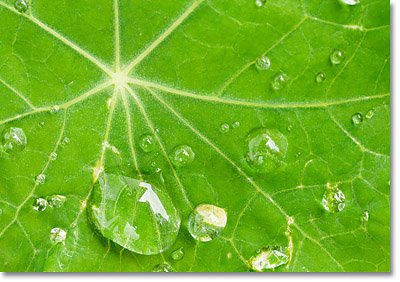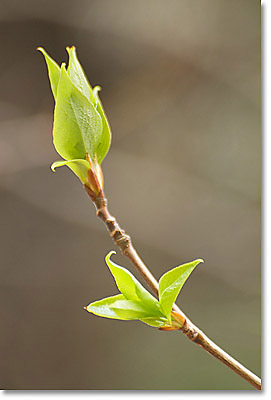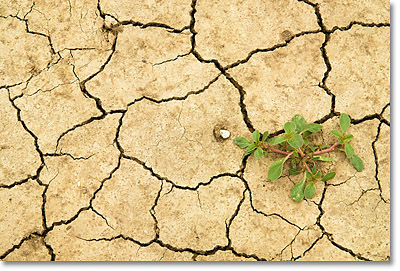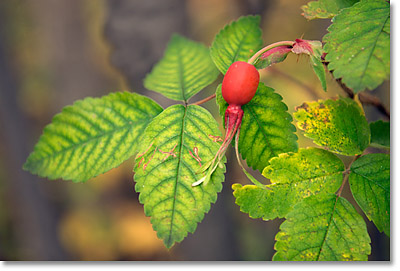Nature photographers bring some of the most stunning imagery of the natural world to the public. We all benefit from having access to these photographs, but with this privilege comes responsibility. There are many things photographers can do to take pictures in a way that reduces impact on the environment. If you love nature and being in nature, these small steps can be incorporated so that you are preserving, rather than destroying, the very thing you came to photograph.
 #1. Recycle and Reuse
#1. Recycle and Reuse
The industry of photography has been slow to clue in to conservationist principles. Consumers can change this and one way is to look for materials that are made from recycled materials such as recycled photo paper. Also, consider donating camera equipment that you no longer use to schools, local camera clubs, or friends and family. Camera stores that have a consignment program also reduce the need to buy new product which in turn reduces the cost of producing millions of new cameras.
#2. Reduce
If you print a great deal, consider buying bulk ink. Minimize your impact on the environment by using renewable paper sources such as bamboo paper. Hahnemuhle makes a bamboo paper that can be found at most camera stores. Reduce your energy uses by using rechargeable batteries for accessories. Install energy-efficient light bulbs like CFL (compact fluorescent lights) or LED (Light Emitting Diode) to replace standard incandescent bulbs. Many of the following tips also work to reduce your impact in specific ways.
#3. Evaluate
Keeping in mind the principles behind recycling and reducing, take a look at your home “office”. This may be a formal space with large monitors and stacks of storage drives if you are a professional, or only your laptop if you are just getting started. The point is, even at home you use energy to make your imagery. Think about a plan that will help you develop consistent habits and lower your energy usage. Some ideas might be:
- Shutting off the lights when you leave the room and leaving them off in the daytime.
- Sign up for a comprehensive recycling program or take your own bins to recycling depots.
- Switch to a renewable electricity supplier.
- Turn off your computer when not in use, or take advantage of computer operating software that allows the computer to ‘sleep’ if you are away for short periods of time. Turn this feature on if you haven’t already done so and set it to a reasonably low wait time—like ten minutes—before it kicks in.
- Upgrade that old monitor to a modern, low emission monitor and recycle old computer parts. Dispose of film-developing chemicals properly.
#4. Unplug
Many accessories draw a phantom load even when they are done with their task. Does it have a little red or green light? Unplug it! End the “death by a thousand cuts” on your electricity bill by purchasing a plug-in power meter. It tests which appliances draw a phantom current so you can unplug them when not in use. Many products and home testing kits can be found at www.powermeter.com.
#5. Get a Website
If you have a computer, a website is almost an essential these days. Even if you shoot film, a website operates as the modern photographer’s portfolio. A website reduces the need for paper, creates great portability with accessing and sharing your images and links you in to other photo networks. There are many websites that cater to photographers and assist you to meet other photographers and share your work. My website is hosted by Smugmug, and for a nominal yearly fee, I can create a professional looking website with the option for image sales at a fraction of the cost of designing my own site. Flickr is also a popular site. Shop around and find a site that meets your needs.
 #6. Conserve
#6. Conserve
It is obvious that manufacturers make money when consumers buy more products. But with the digitalization of photography, the movement to upgrade has become a stampede. New camera models come out every couple of years that are newer! bigger! better! But ask yourself: Do I really need this new item? When you evaluate your need, consider why you use the piece of equipment. Do you make your living from photography? Is this upgrade necessary to remain competitive with others in your field? If you are a hobbyist, does this purchase improve your work or greatly increase your enjoyment? By being objective, consumers can avoid the pressure to upgrade for the sake of “keeping up with the Joneses” and keep more money in their wallets. Factor in the hidden costs that come with a camera upgrade especially: more pixels means bigger files which demands more computer storage space, and often, you must buy new batteries, new chargers, new cable releases, etc. Less demand for such items will mean fewer resources used creating millions of cameras and accompanying accessories that become obsolete within a few years. Also, take good care of the equipment you have to maximize its life span.
#7. Shop Smart
Vote with your wallet! Look for companies that have an environmental policy. If your favorite companies do not have one, write to them and express your concern. Companies will respond, and every amount of pressure helps. Favor companies that manufacture locally. This is good for the economy and good for the environment. If the company outsources to other countries, check into the manufacturing country’s reputation with protecting its workers and the environment. Use the tools that are available that review and rank companies and products. Check out The Better World Shopping Guide by Ellis Jones for a comprehensive look at the ‘environmental score’ of many common products and companies.
 #8. Shoot Locally
#8. Shoot Locally
There is so much right outside your door to photograph! Not all of us can afford to travel to exotic locations, and those who can afford to may want to consider the impacts of such trips on the environment. Flying creates a huge carbon footprint. There are many critters in our own backyards. Take a stroll through urban parks and you’ll see squirrels, birds, insects and diverse vegetation. Take a day trip just outside the city, or down the road if you live in the country, and watch for animals just off the lane. Instead of jetting off to Africa or cruising to Antarctica, try to shoot every month at the closest official park or refuge. Often, by working one location consistently, you will be rewarded with fresh results beyond the obvious.
If you do travel long distances to take your pictures, look for ways to make your trip have less environmental impact. Book your trips with reputable companies that have the interests of the environment at heart. Eco-lodges or eco-travel companies allow you to experience unique locales while minimizing the impact of your visit. In Alberta where I live, I attend photo workshops at the eco-lodge, Aurum Lodge. Some airlines allow you the option of making your trip carbon neutral by ‘purchasing’ carbon offsets to compensate for the carbon produced by your flight. But do your research, and inquire around. Not all companies are created equal! The smart consumer will be on the lookout for “greenwashing.” These are superficial statements or policies that look good but really do little to protect the environment.
#9. Car Pool
Driving is also hard on the environment. Share the ride whenever you can with friends or arrange a car pool with your local camera club. Public transit might be an option to get you to that beautiful wood in the city.
#10. Tell a Friend - Network
Consider joining your local environment group or even an online group to stay up to date and to network with like-minded people. One online group specifically for photographers is Greener Photography. Remember that often the best way to affect change is to set an example. Challenge one friend to adopt some changes too. Encourage that friend to challenge another person, and so on. The ripple effect of this kind of change is very powerful. It also enshrines the power for change with you, the citizen, so we don’t have to rely on the goodwill of the market or the vision of the government to create the world in which we want to live.
Comments on NPN nature photography articles? Send them to the editor.
Samantha Chrysanthou was born in Lethbridge, Alberta. After moving for a period of time to northern Alberta, she returned in 2000 to southern Alberta to pursue a law degree in Calgary. After becoming a lawyer, Samantha began to realize her heart was more engaged in capturing the beauty of the landscape around her than debating the nuances of legal arguments in court. She has since left law to pursue writing and photography full-time. She particularly enjoys shooting the prairies, foothills and Rocky Mountains within an hour or so of her home in Cochrane, Alberta. Visit Samantha’s website to view more of her work at www.chrysalizz.smugmug.com